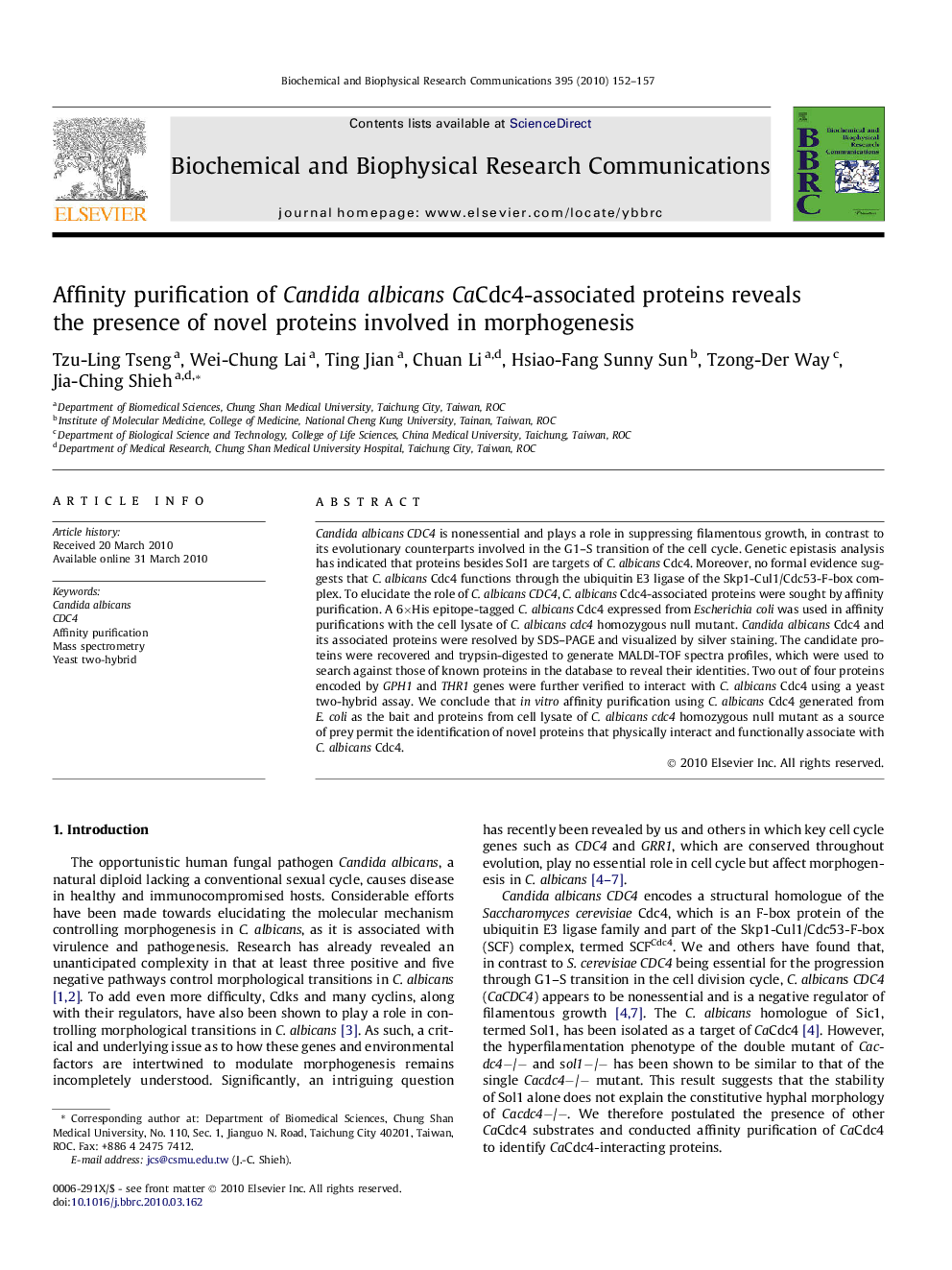| Article ID | Journal | Published Year | Pages | File Type |
|---|---|---|---|---|
| 1932361 | Biochemical and Biophysical Research Communications | 2010 | 6 Pages |
Candida albicans CDC4 is nonessential and plays a role in suppressing filamentous growth, in contrast to its evolutionary counterparts involved in the G1–S transition of the cell cycle. Genetic epistasis analysis has indicated that proteins besides Sol1 are targets of C. albicans Cdc4. Moreover, no formal evidence suggests that C. albicans Cdc4 functions through the ubiquitin E3 ligase of the Skp1-Cul1/Cdc53-F-box complex. To elucidate the role of C. albicans CDC4, C. albicans Cdc4-associated proteins were sought by affinity purification. A 6×His epitope-tagged C. albicans Cdc4 expressed from Escherichia coli was used in affinity purifications with the cell lysate of C. albicans cdc4 homozygous null mutant. Candida albicans Cdc4 and its associated proteins were resolved by SDS–PAGE and visualized by silver staining. The candidate proteins were recovered and trypsin-digested to generate MALDI-TOF spectra profiles, which were used to search against those of known proteins in the database to reveal their identities. Two out of four proteins encoded by GPH1 and THR1 genes were further verified to interact with C. albicans Cdc4 using a yeast two-hybrid assay. We conclude that in vitro affinity purification using C. albicans Cdc4 generated from E. coli as the bait and proteins from cell lysate of C. albicans cdc4 homozygous null mutant as a source of prey permit the identification of novel proteins that physically interact and functionally associate with C. albicans Cdc4.
